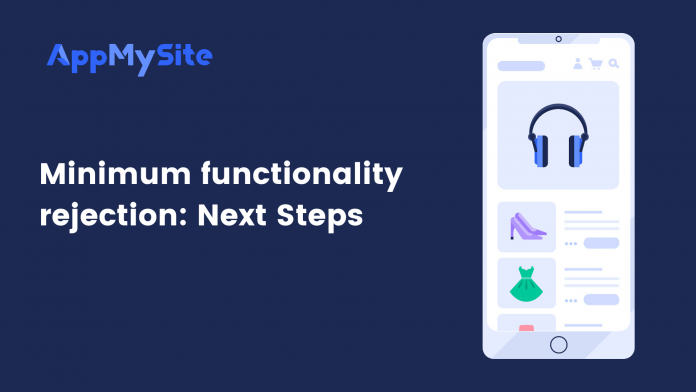“We found that the usefulness of your app is limited by the minimal amount of content or features it includes.
Next Steps:
We encourage you to review your app concept and incorporate different content and features that are in compliance with the App Store Review Guidelines. We understand that there are no hard and fast rules to define useful or entertaining, but Apple and Apple customers expect apps to provide a really great user experience.
Apps should provide valuable utility or entertainment, draw people in by offering compelling capabilities or content, or enable people to do something they couldn’t do before or in a way they couldn’t do it before.”
If you have received this message from Apple post app submission, your app has been rejected on grounds of minimum functionality. This is one of the most perplexing and ambiguous reasons for rejection and it is discussed in the Design section of Apple’s guideline document. Sub-section 4.2 of the guideline is dedicated to ‘Minimum Functionality’ and the gist of this section is that “Your app should include features, content, and UI that elevate it beyond a repackaged website.”
Like most other clauses and guidelines by Apple, the description of minimum functionality is also quite vague. As mentioned above, there are no hard and fast rules to overcome it and the remedy also depends on your use case, app type, content, and other contributing factors. However, you can go through some possible solutions below and be on the lookout for same:
Solutions:
Do not submit unfinished apps
Before you submit your app to Apple, make sure that you have added all the content, button texts, links, media, etc., that are needed for the design and functionality of the app. Replace placeholder texts with actual content and do all the previewing and testing before submission.
Ensure solid native functionalities
We recommend creating native apps for both Android and iOS. However, if you wish to render your website into an app through web view for any reason, then make sure that your app looks and performs like an app and not a website. Try the following and ensure that your app performs natively:
- Hide your app header & website footer as that can make your app look like a website.
- Hide the domain name and options shortcut button from your app.
- Create a native menu with our menu creator.
- Enhance the native navigational and interactive experience by enabling features like Bottom Navigation Bar, In-app Chat, Push Notifications, and Monetization.
These tweaks can help you attain native functionalities within your app. It will reduce your chances of rejection as the app screens will not appear like website pages and enable users to interact with the app more efficiently.
Make your app “app-like”
An app that is just like a page, video, catalog, or website is not considered an app by Apple. In fact, Apple wants you to know and understand that your app should truly behave, appear, and perform like an app. It should have a lasting value and ample utility. Design your app in such a way that it looks feature-loaded and intuitive and has enough scope of interaction for end users.
Have a strong app concept
Apple is all about quality, trust, and amazing user experience. There is no room for “average” on the App Stores as the rejection message from Apple clearly reads that the app should ‘enable people to do something in a way they couldn’t do it before’. Make your app valuable and purposeful and align it with your business accordingly. Try to incorporate concepts with content to amplify the app’s worth for its end-users.
The app’s primary goal is not marketing or promotion. Avoid adding too much marketing material or links. Leave no pages empty and match your app description & metadata with the concept of the app. Do not attempt to outwit Apple or your end users. Instead, try to critique your app’s usefulness and functionality from their perspective.
Aim to engage users
More than anything, your app should interest users and inspire them to download and interact with it. The more room for user interaction, the higher your chances of getting accepted. Add features like chat, reviews & ratings, comment sections or discussion forums, etc., and allow users to express themselves. Moreover, if users need to download additional resources for the functioning of the app, disclose it beforehand. Mention the size of downloads and other significant information. Make the journey as intuitive, simple, and engaging for your users as you can.

